


There are over 60 processors in the S/X. Other models have fewer processors, but still quite a few. To get an idea of all the vehicle processors, see our Processors Count article.
Here we’ll focus on two processor modules that are often confused as to which do what functions. (Nov-2024 Update)
Media Control Unit (MCU)
This refers to the computer module in the center of the S/X dashboard with the touch display prior to January 2021, or the main computer module in every 3/Y and the S/X after January 2021.
The module includes processors, RAM, non-volatile memory, the audio subsystem, audio amplifiers, WiFi, Cellular, Bluetooth, GPS, the Ethernet bridge, multiple CAN bus communications, the LIN bus, USB ports, and more.
The MCU is responsible for the visualizations, all external communications, audio, cellular, navigation, and settings. It has little to do with Autopilot’s ability to drive other than settings.
There are three versions of the MCU in the S/X:
MCU1 – using an Nvidia quad-core processor was in all S/X cars made from the start of production to February 2018. Tesla now offers a retrofit option to switch from MCU1 to MCU2. More details are available on the Tesla Infotainment Upgrade page.
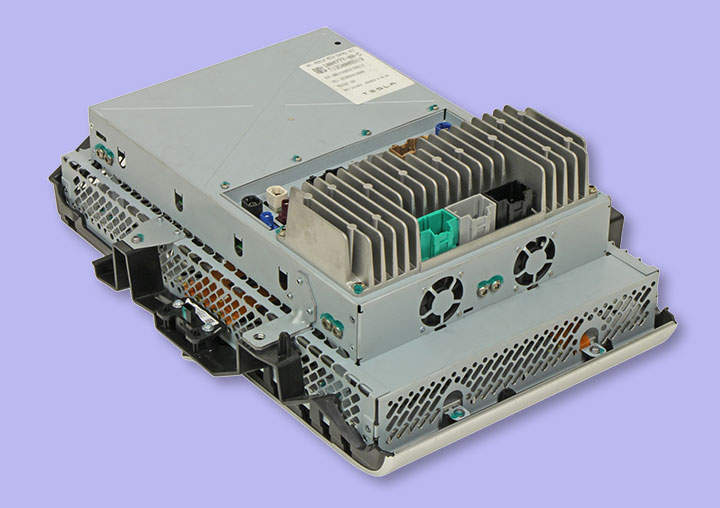
There are actually two MCU1 variants, with different connectors. The internals is basically the same in both variants. The red arrow shows the connector change. The older 1004777 is no longer made. For older cars, the newer 1045006 part can be used with an adapter. Some of the earliest 1004777 MCUs only have 3G and do not have LTE. Tesla offers a paid upgrade for those that want LTE, which changes a module within MCU1. All of the 1045006 variants include LTE.
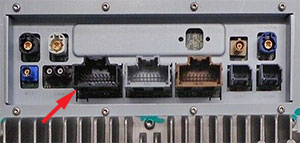
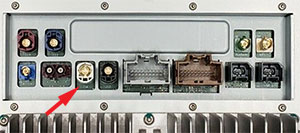
MCU2 – using an Intel multi-core Atom processor, this MCU began shipping in the S/X in March 2018. MCU2 offers snapper operation, 5 GHz WiFi, a newer Bluetooth version, and additional antennas (external to the MCU2), along with other minor changes.
If you want to confirm which MCU your S/X has, we created an MCU tester. In the browser on the car, enter: TeslaTap.com/mcu
The Model 3/Y architecture is different, with the display and MCU in separate modules. This MCU also uses the same Intel Atom processor and other components used in the pre-June 2021 S/X MCU2.
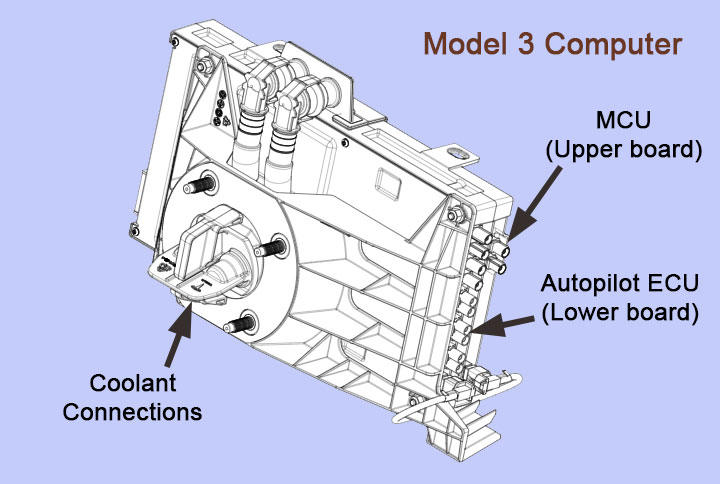
MCU-Z – This is the newest module used in S/X vehicles made in mid-2021. It is a liquid-cooled module similar to the 3/Y, but with new processors. The China Model Y during Q4-2021 switched to a variant of MCU-Z, and it is now in all cars as of early 2022.
MCU-Z uses the AMD Navi 23 GPU in the S/X, a major upgrade from prior GPUs. It handles all three displays in the S/X, using HDMI for one, and DisplayPort for the other two. The graphics power is considered close to the Sony PS5, which also uses an AMD GPU.
The CPU is an AMD Ryzen processor a significant performance upgrade over the Intel Atom processor in MCU2.
Autopilot ECU Processor
There are currently four-vehicle hardware variants related to Autopilot.
HW0 –Early Model S with no autopilot capability.
HW1 – First Autopilot, based on the Mobileye chip. It used a single camera, radar, and 12 medium-range ultrasonic sensors. The electronics are co-located with the camera, behind the rearview mirror.
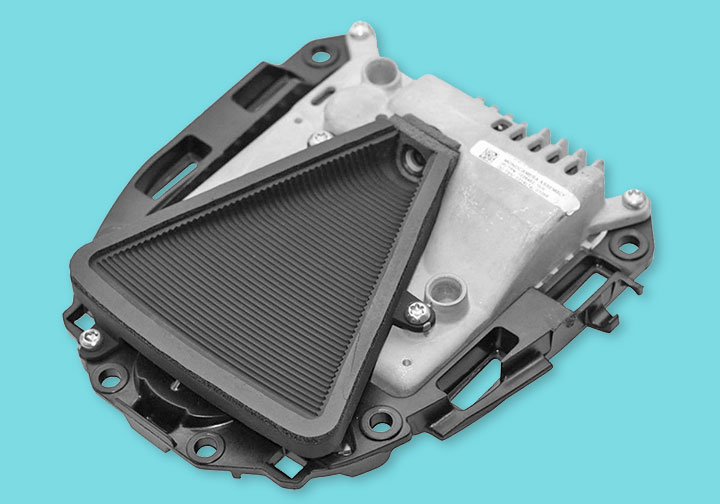
HW2.0 – Tesla’s 2nd generation design, using 8 cameras, 12 long-range ultrasonic sensors, and one front radar. An entirely new ECU processor module was created by Tesla, based on Nvidia’s Drive PX2 system. This ECU is located below the glove box.
HW2.5 – This provides a small update to HW2.0, primarily for redundancy and slightly improved reliability. This version also made possible two non-autopilot features – dashcam and sentry mode with locally saved video.
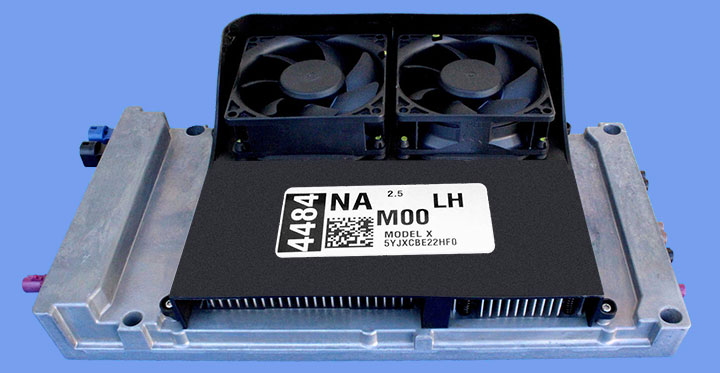
The early Model 3/Y Autopilot ECU hardware is similar to HW2.5 but uses liquid cooling from the cars coolant loop instead of fans.
HW3 – A major update to the Autopilot ECU using Tesla’s own chip design.
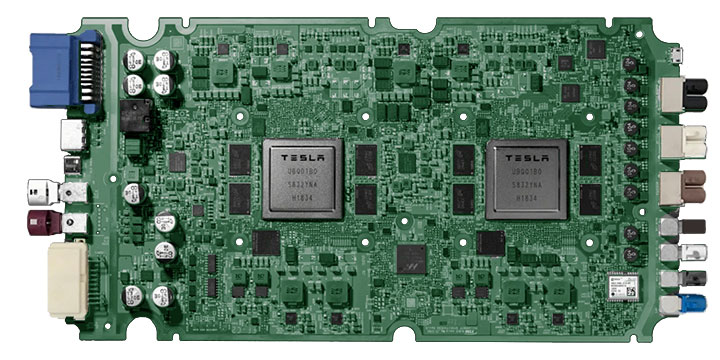
HW4 – Is the latest update to the Autopilot ECU using Tesla’s 2nd generation chip design. It is said to have 3 times the neural net performance of HW3. It first appeared in the March 2023 Model S/X builds, and later in other models. The size, design, and connectors are somewhat different, making it unlikely to be offered as a retrofit to HW3.
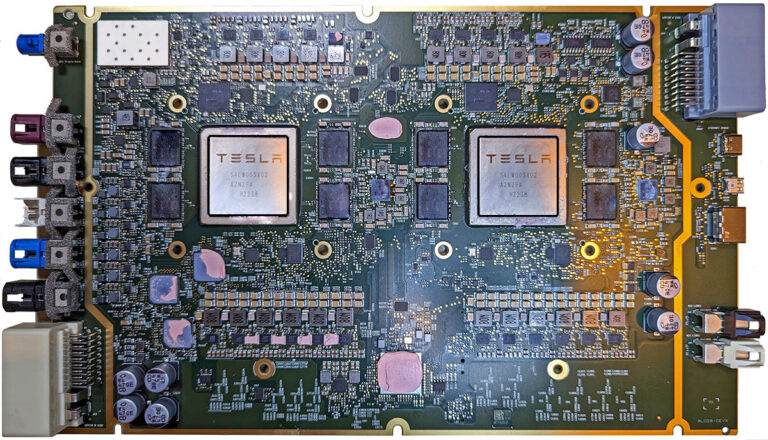
HW Release Sequence and Timeline
| Hardware Level | Release Date Model S/X | Release Date Model 3/Y |
|---|---|---|
| MCU1 & HW0 | 22-Jun-2012 | n/a |
| HW1 | 17-Sep-2014 | n/a |
| HW2.0 | 1-Oct-2016 | n/a |
| MCU2 | 5-March-2018 | 28-Jul-2017* |
| HW2.5 | 1-Aug-2017 | 28-Jul-2017* |
| HW3 | 22-Mar-2019 | 12-Apr-2019** |
| MCUZ | 1-Feb-2021 | 1-Apr-2022 |
| HW4 | 1-Mar-2023 | Q2-2023 |
** There have been a small number of cars in the summer of 2019 that got HW2.5 AP processor instead of HW3. 0
Hardware Specifications for new cars (no retrofits)
This covers many of the technical components that make up the Autopilot systems over the various hardware versions.

| Item | HW1 | HW2.0 | HW2.5 | HW3 | HW4 | ||
|---|---|---|---|---|---|---|---|
| Front Cameras | 1 | 3 – Narrow 35°, Main 50°, Wide angle 120° | 2 | ||||
| Headlight Cameras | 0 | 2 | |||||
| Side Cameras | 0 | 2 - 90° | |||||
| Side Rearward Cameras | 0 | 2 – 60° | |||||
| Rear | Not used for AP | 1 - 150°, RGGB* | |||||
| Inside | n/a | n/a | 1, RGGB* | ||||
| Front/Side Camera Filters | Monochrome | RCCC* | RCCB* | ||||
| Radar | Bosch | Continental | Continental, Removed on some models | Phoenix | |||
| Sonar sensors | 12, each with 16 ft range | 12 - each with 26 ft range | 0 | ||||
| Core Processors | Mobileye EyeQ3 | 1 – Nvidia Parker SoC** 1 – Nvidia Pascal GPU 1 – Infineon TriCore CPU | 2 – Nvidia Parker SoC** 1 – Nvidia Pascal GPU 1 – Infineon TriCore CPU | 2 – Tesla chips, each including 12 Exynos 64-bit ARM cores, 2 GPUs, 2 neural network processors and 1 lockstep CPU | 2 – Tesla chips, each including 20 Exynos 64-bit ARM cores, 2 GPUs, 3 neural network processors and 1 lockstep CPU | ||
| RAM | 256 MB | 6 GB | 8 GB | 8 GB x 2 | 8 GB x 2 | ||
| Flash Memory | 4 GB x 2 | 4 GB x 2 | |||||
| Processing Power | 1x | 40x | 40x w/redundancy | 420x w/redundancy | 1260x w/redundancy | ||
| Frames per second | 36 | 110 | 110 | 2300 | ? | ||
| Estimated Power | 25W | 250W (Idle 40W) | 300W | 220W | 300W? | ||
| Steering Rack | Single Power | Single Power | Redundant Power | Redundant Power | |||
** Pascal SoC includes 2 Denver and 4 ARM A57 CPU Cores and a Pascal GPU
Retrofits
For older cars that are FSD capable, those owners who purchased unlimited Full-Self-Driving (FSD) get a free upgrade to the HW3 ECU processor. HW3 upgrades were started for HW2.5 vehicles in the fall of 2019 and HW2.0 vehicles in 2020.
For owners with HW2.0 and FSD, in late 2021 Tesla started a free retrofit program to update 7 of the 8 cameras. This program is being controlled by VIN and parts availability.
The monthly subscription FSD also requires the car have the HW3 or WH4 ECU processor. If the car has HW2 ECU and it is capable of getting the retrofit, there is a $1000 charge to get the HW3 ECU.
For owners of HW2.0 cars, the addition of HW3 ECU provides the hardware necessary for FSD. It also enables the dashcam and Sentry mode features, although the quality is not great with MCU1. Owners can also upgrade the MCU1 to MCU2.
Autopilot and Safety Related Features
The Tesla Autopilot terminology has changed over the years. The first Autopilot system, using one camera, is now informally referred to as AP1. Starting with the new hardware HW2.0, Tesla changed the feature name to Enhanced Autopilot (EAP) with several extra features. In March-2019, Tesla dropped EAP and created a lower cost, less featured Autopilot simply called AP. In April, this became standard on all new cars ordered from the web (It’s not standard on the special order Model 3 SR). This new AP is a subset of EAP features, with other EAP features being moved into the FSD (Full-Self-Driving) feature set. In 2022, Tesla brought back EAP, as a lower cost subset of FSD.
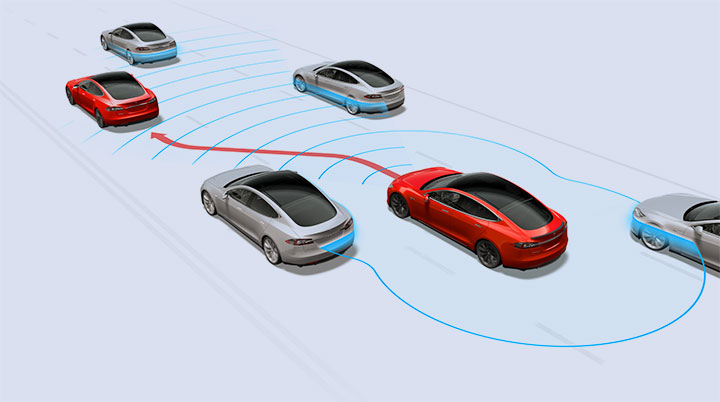
Those owners that purchased EAP will continue to get all of the EAP features and get upgrades in the future. Smart summon for example is an FSD feature, but EAP owners also got this feature.
FSD features are optional and can be purchased with a new car, or purchased and activated later. Instead of buying FSD, Tesla plans to also offer a monthly subscription option. Details and the price for the subscription service has not yet been set.
The following feature chart only applies to vehicles made on 17-Aug-2014 and later. Earlier cars do not have any of these features.
| Feature | No AP | AP1 | AP* | EAP* | FSD* |
|---|---|---|---|---|---|
| Front Collision Avoidance | Yes | Yes | Yes | Yes | Yes |
| Lane Departure Warning | Yes | Yes | Yes | Yes | Yes |
| Lane Departure Avoidance | Yes* | No | Yes | Yes | Yes |
| Emergency Lane Departure Avoidance | Yes* | No | Yes | Yes | Yes |
| Side Collision Avoidance | Yes* | No*** | Yes | Yes | Yes |
| TACC | No | Yes | Yes | Yes | Yes |
| Autosteer, accelerate and brake | No | Yes | Yes | Yes | Yes |
| Autopark | No | Yes | No | Yes | Yes |
| Auto Lane Change | No | Yes** | No | Yes | Yes |
| Read Speed Signs | No | Yes | Yes | Yes | Yes |
| Summon | No | Yes | No | Yes | Yes |
| Smart Summon | No | No | No | Yes | Yes |
| Navigate on Autopilot | No | No | No | Yes | Yes |
| Respond to Traffic lights and stop signs | No | No | No | No | Yes |
| Full Self Driving | No | No | No | No | Future |
** AP1 requires confirmation when traffic safe
*** Was available prior to v8.0 software, but not was not effective and was removed
Autonomous Driving
The following chart shows the levels of autonomous driving as defined by the Society of Automotive Engineers (SAE).
| SAE Level | Description | Monitored By |
|---|---|---|
| 0 | No automation | Driver |
| 1 | Assisted driving, typically with cruise control | Driver |
| 2 | Advanced assisted driving with steering, braking, and steering in select environments | Driver |
| 3 | Conditional automated driving, but the driver may be asked to take over | System |
| 4 | Highly automated driving, driver not required to take over | System |
| 5 | Fully automated driving can handle anything a human can. | System |
Currently, Tesla offers a level 2 type of autonomous automation option. Tesla’s goal is to transition to level 3 and eventually to level 5, which is called FSD. Tesla announced in early 2020 that a portion of FSD should be available by the end of 2020 depending on regulations. Complete FSD will depend on completed software development and regulatory approvals in each jurisdiction.
Keep in mind there are conditions where FSD will not work, conditions where humans should not drive either, although some humans foolishly try. Some of these conditions include:
- Heavy fog
- Heavy snow/whiteout
- Deep snow on roads
- Hail
- Floods
- Monsoons
- High Winds (Hurricanes & Tornadoes)
- Fires sweeping over a road
- Lava flows
- Mudslides
For 99.99% of daily driving, FSD should work fine – just like humans. We suspect at some point FSD may even be tied into the weather network to determine if there will be an impediment to reaching the destination and advise of the issue.
Part Numbers
| Item | Model | Part Number |
|---|---|---|
| MCU1 with display, early cars, no longer available | S/X | 1004777-00-A |
| MCU1 with updated display and LTE, the latest version | S/X | 1045006-00-J |
| MCU1 Internal Tegra board with 64 GB eMMC | S/X | 2728212-S0-B |
| MCU2 with display | S/X | 1451809-S0-B |
| MCUZ and Autopilot ECU | S/X | 1637790-S0-F |
| Autopilot ECU 2.0 | S/X | 1078321-00-C (MS) 1078321-70-C 1078321-70-D 1078321-70-G |
| Autopilot ECU 2.5 | S/X | 1125800-70-C 1125800-70-G |
| Autopilot ECU 3.0 | S/X | 1655000-00-F* 1655000-70-F |
| MCU2 and Autopilot ECU ** | 3/Y | 1566786-S0-E |
| MCUZ and Autopilot ECU | 3/Y | 1681271-S0-D |
** The MCU and Autopilot ECU are two boards in the same module and are functionally similar to the S/X MCU2's computer and Autopilot ECU

Notes
Thanks go to Green, who provided some of the analysis work and HW3 and HW4 PCB images (with his permission).